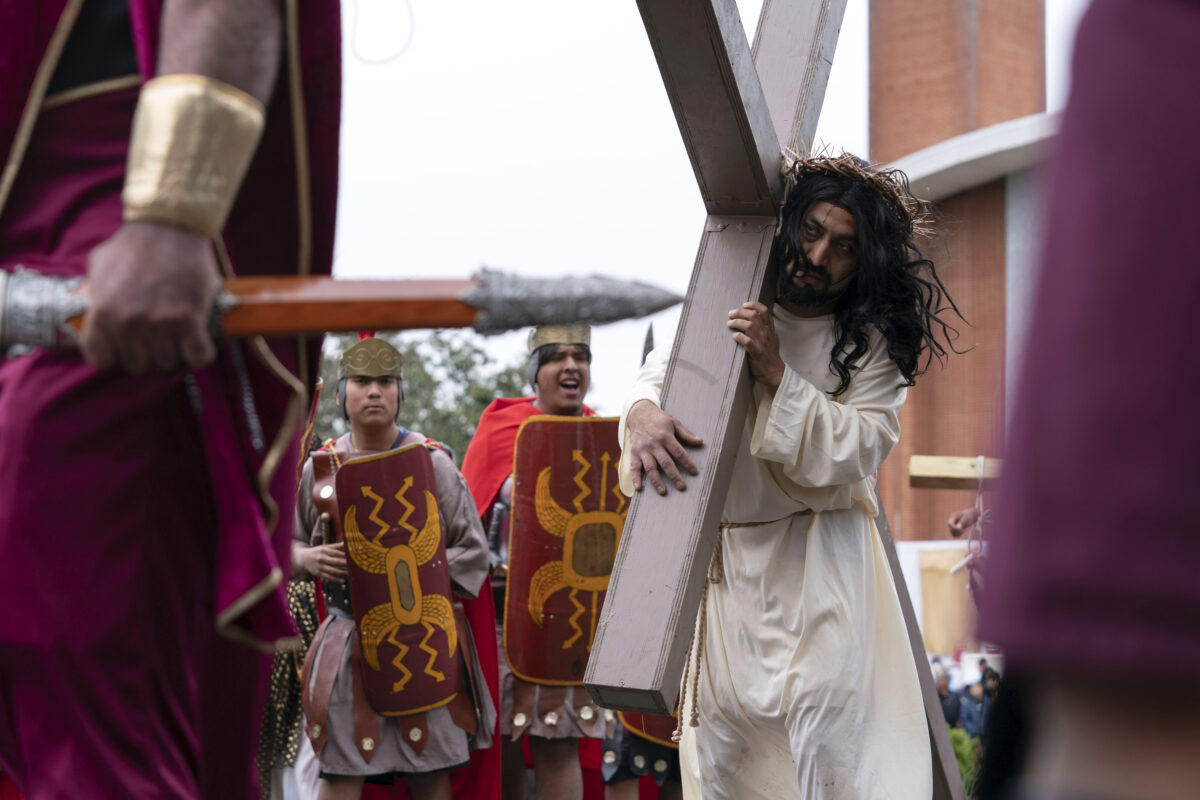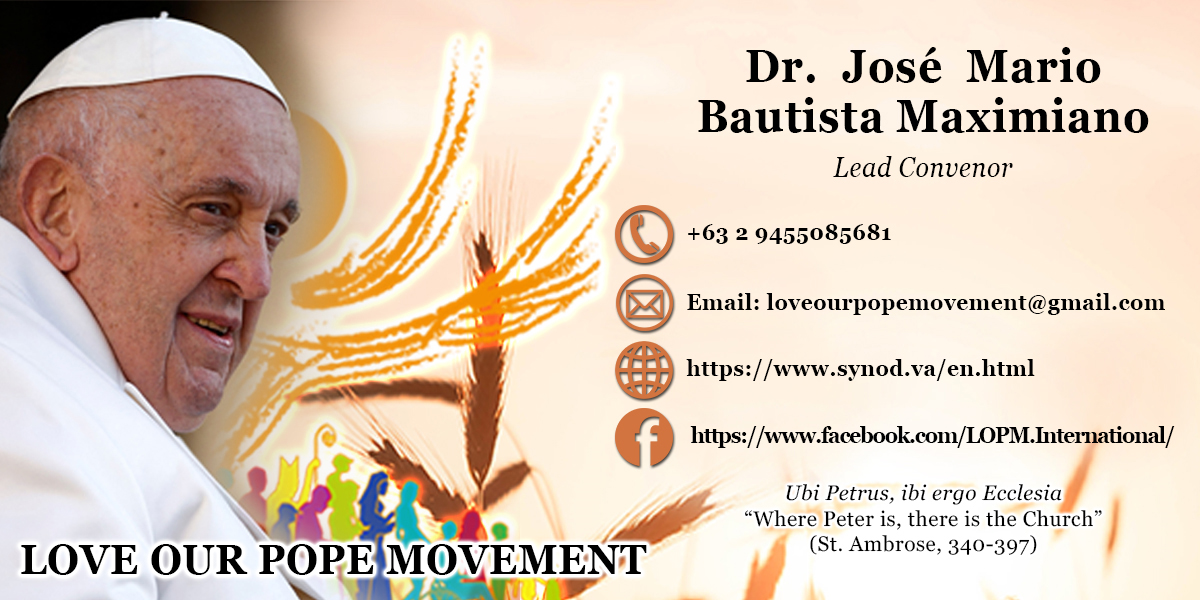Holy Week: What we do, where we go

Juan Carlos Rosas, performs as Jesus Christ during a Good Friday re-enactment of the crucifixion of Christ, with other parishioners of St. Bernard Catholic Church, during a Good Friday procession to commemorate the Stations of the Cross in Riverdale, Md. on Friday, April 7, 2023. (AP Photo/Jose Luis Magana)
In the Philippines, work on Holy Wednesday is a half day to afford all Filipino employees and workers the opportunity to observe the solemn days leading to Easter. The days of the Easter Triduum, from Maundy Thursday to Black Saturday, are considered statutory holidays. Most television, radio and social media networks usually go off the air from Good Friday to Easter Sunday.
A lot of businesses are closed, and EDSA is empty. And the Christian world once again witnesses the uniqueness of the Filipino observance of the Holy Week (Spanish: Semana Santa; Filipino: Mahal na Araw).
But gone are the days when all Catholics observed Holy Week with special solemnity, a quiet full week of devotion to the passion, death and Resurrection of Jesus Christ, the “most important days in the Christian calendar.” Gone are the days when grandmas and mothers told their kids to avoid shouting and overexcited fun, days when Holy Week meant the face looked serious and gloomy in remembrance of the sufferings of Jesus.
Gone are the days when most Christians understood the fundamental reason why they needed to practice silence, abstinence and almsgiving (caridad). Secularism, materialism and consumerism seem to take the limelight, just like how they dominate the Christmas season, and eclipse the theological and spiritual significance of the observation of the Lenten sacrifice or some sort of mortification (“death to one’s mundane inclinations”) and the traditional and liturgical celebrations that may lead us to the joy of Easter. For there is no resurrection without Good Friday!
Unique in popular religiosity and traditions
Generally, popular religiosity and various traditions make the Filipino faith alive. However, in some instances, the Spanish-influenced Catholic rituals such as processions, panata or self-flagellation and other practices have been syncretized with elements of a little bit of fanaticism and ritualism. This is evident in certain rituals and other superstitious beliefs associated with the Holy Week.
In Pampanga, for example, Holy Week witnesses on the road several self-flagellating penitents – and Maleldo, which in itself has become an annual public spectacle in the province, highlighted by the reenactment of the crucifixion of Jesus Christ, returns.
Imitatio Christi, or the imitation of Christ, is the highest act of adoration, and so local and foreign observers wonder whether the annual Good Friday crucifixion in Cutud, Pampanga, is the highest form of the imitation of Christ, and therefore the highest act of adoration.
Moreover, Holy Thursday and Good Friday of the Holy Week are also the times when many churches are in a sort of competition, for lack of a better description, to beckon Visita Iglesia, a Catholic penitential tradition of visiting at least seven different churches.
Most families who participate visit churches away from their hometowns. Some people do participate in Visita Iglesia to have their wishes granted since they believe that those who complete their Visita Iglesia will be rewarded. Bishops and priests do not tire of telling us year after year that religious traditions and pious practices are made not to “feel good” but to be one with the suffering Christ.
Unique in travels and destinations during Holy Week
It is now normal to observe how residents go out of the National Capital Region, leaving the city a ghost town and EDSA virtually an empty highway on Good Friday.
In the Philippines, known as the cradle of Christianity in Asia, all forms of air, land and sea transports are busy, and every bus terminal and airport braces for the Holy Week surge. You’ll hear Manila and urban center residents say, “We’ll go as far away as we can to get some fresh air and avoid traffic.”
In addition to holy pilgrimages, attending Masses and performing the round of the Stations of the Cross, Filipinos also see Holy Week as an opportunity for family gatherings, sightseeing and/or R&R on beaches. Destinations include world-class resorts across the archipelago of seven thousand islands, from Aparri to Jolo. At this time of the year, hotels, resorts, staycation lodges, bars along these beaches and hideaway places make this announcement: “Holy Week 2024 – Great Places and Destinations for a Relaxing Long Weekend!”
The new millennium witnesses more and more young Filipinos, mostly Catholics, making a trip to Boracay to celebrate a “very long weekend of sin: Drinking and dancing until the sun comes up.”
It begs the question: Did we just lose the “holy” in Holy Week permanently? What has happened to “the noble Church in the Philippines [that] now stands among the great Catholic nations in the entire world”? In several synodal consultations I have attended, I’ve heard a couple times that these areas of religious traditions bordering on ritualism and the half-baked observance of Holy Week need a more dynamic approach in the new evangelization.
José Mario Bautista Maximiano is the author of “Church Reforms – Semper Purificanda,” Volume One (Claretian, 2023) and the author of “MCMLXXII: 500-Taong Kristiyano,” Volume Two (Claretian, 2021), declared the “Best Book in Ministry” during the 16th Cardinal Sin Catholic Book Awards 2022.


